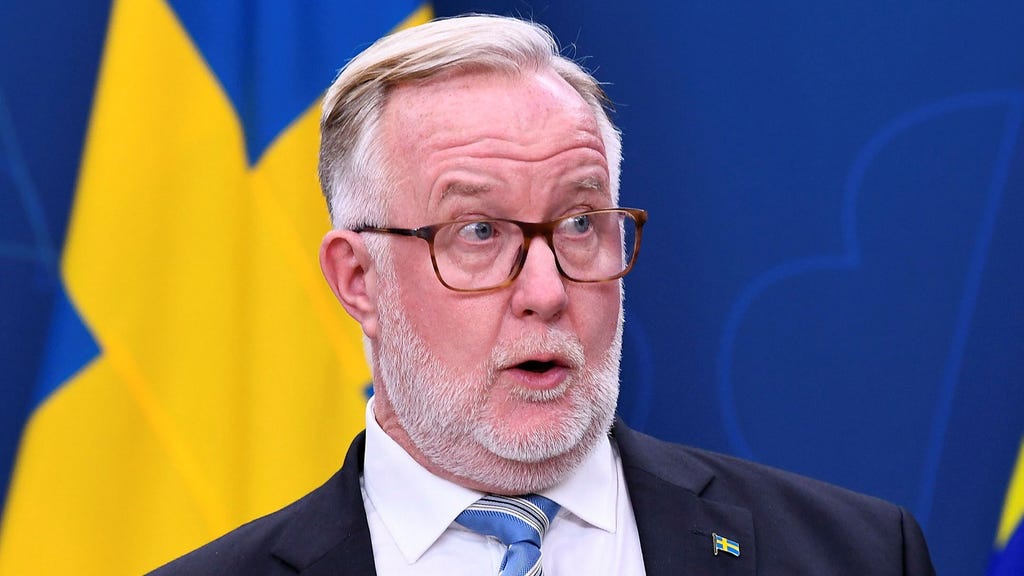This text excerpt from Dagens Nyheter, a Swedish newspaper, critiques the perceived ambiguity and lack of clear political positions of Johan Pehrson, a figure in Swedish politics. The author, Alex Schulman, characterizes Pehrson as uniquely obscure, unable to express a firm opinion without immediately qualifying it with reservations. This raises the fundamental question: What does Johan Pehrson actually stand for? What are his political goals and driving principles? The short excerpt doesn’t provide answers, instead focusing on the perceived absence of clear stances. The remainder of the text is a subscription prompt, urging readers to log in or subscribe to Dagens Nyheter to access the full article and learn more about Schulman’s analysis of Pehrson.
Schulman’s opening statement highlights the central theme of his critique: Pehrson’s perceived lack of clarity and conviction in his political positions. He paints a picture of a politician constantly hedging his bets, unwilling to commit to a definitive stance. This ambiguity, according to Schulman, makes Pehrson stand out, albeit in a negative way, within the landscape of Swedish politics. The excerpt emphasizes the frustration this ambiguity creates for observers trying to understand Pehrson’s political ideology and motivations. The core questions remain unanswered, leaving the reader with a sense of uncertainty about Pehrson’s true beliefs and intentions. This lack of transparency is presented as a significant issue, potentially hindering voters’ ability to make informed decisions.
The brevity of the provided excerpt underscores the need for further context. It’s a tantalizing glimpse into a potentially larger critique, leaving the reader wanting more information. Without access to the full article, it’s impossible to fully grasp the nuances of Schulman’s argument or understand the specific policy areas where Pehrson’s ambiguity is most evident. However, the excerpt effectively sets the stage, highlighting a potential problem with Pehrson’s political communication style. This style, characterized by caveats and reservations, can be interpreted as a lack of conviction or perhaps a calculated strategy to appeal to a broader range of voters.
The excerpt serves as an effective hook, designed to pique readers’ curiosity and encourage them to subscribe to Dagens Nyheter. It cleverly presents a compelling argument about a political figure, raising important questions about his political ideology and effectiveness. By withholding the full analysis, the newspaper encourages readers to subscribe in order to gain access to the complete story. This strategy leverages public interest in political figures and policy debates to drive subscriptions.
This particular excerpt, while concise, reveals a broader trend in contemporary political discourse: the increasing scrutiny of politicians’ communication styles and the demand for greater transparency and clarity. In an era of information overload and often polarized political debates, voters increasingly value clear and consistent messaging. Ambiguity and perceived evasiveness can be detrimental to a politician’s credibility and can erode public trust. The public expects their elected officials to articulate their positions clearly and to stand by their convictions. Pehrson’s perceived ambiguity, as highlighted by Schulman, potentially clashes with this expectation.
In conclusion, this brief excerpt from Dagens Nyheter effectively raises questions about Johan Pehrson’s political identity and effectiveness. By focusing on his perceived ambiguity and reluctance to take firm positions, Schulman sets the stage for a potentially deeper critique of his political approach. While the excerpt itself provides limited information, it serves as a compelling teaser, prompting readers to seek out the full article. This highlights the role of media in shaping public perceptions of political figures and the increasing importance of clear and transparent communication in the political arena. The full article likely delves into specific examples of Pehrson’s ambiguous statements and explores the potential consequences of this communication style on his political career and the broader political landscape.














